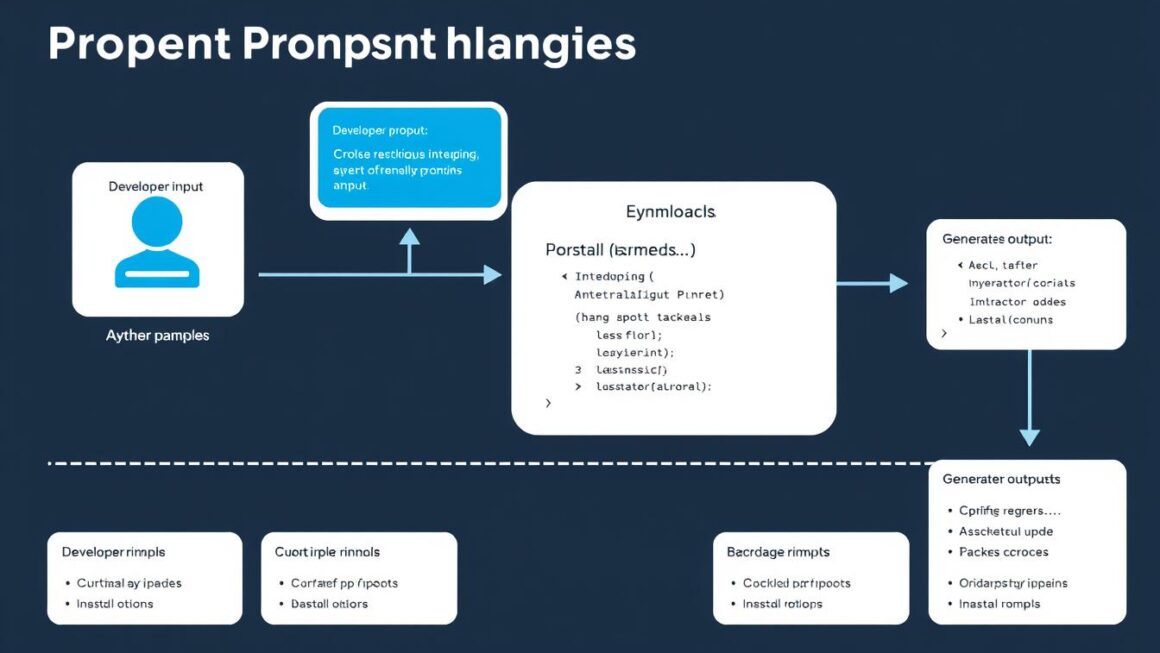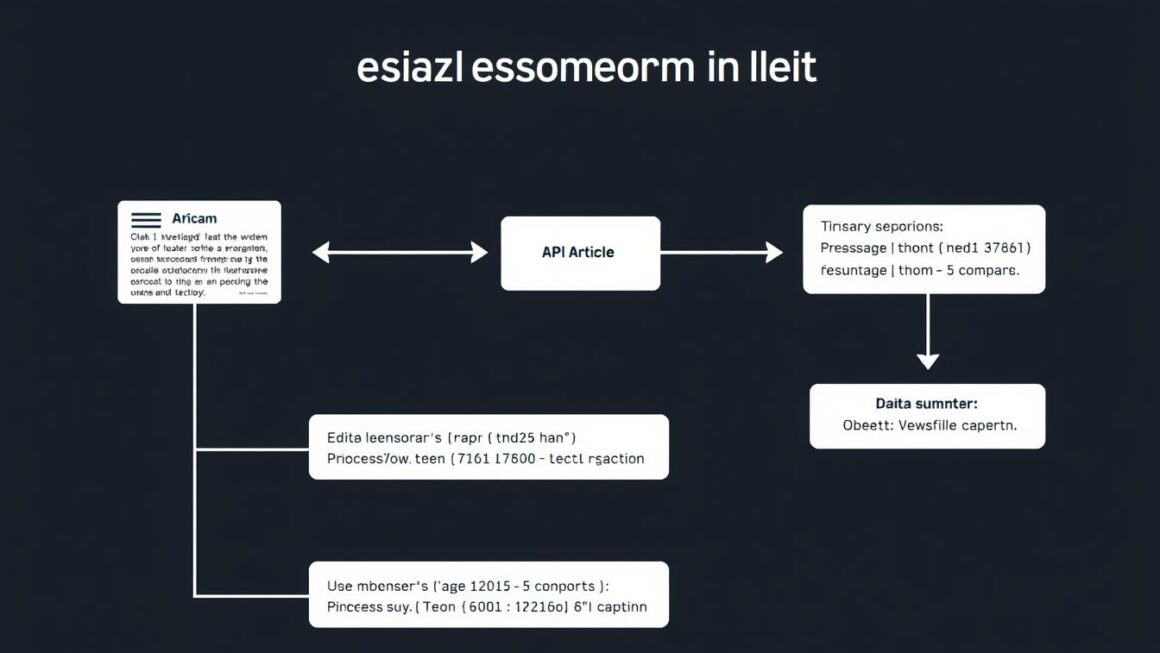Did you know high-performing DevOps teams deploy code up to 200 times more than others? DevOps is changing the game in software development. It connects development and operations teams.
This guide will take you through the world of DevOps, CI/CD, and GitOps. You’ll see how these methods are changing software delivery. They make releases faster and improve teamwork.
DevOps is more than just a buzzword. It’s key for staying ahead in the digital world. By using CI/CD and GitOps, teams can improve their work, cut down on mistakes, and get to market quicker.
In this guide, we’ll share practical tips, best practices, and strategies. Whether you’re an experienced developer or new to DevOps, we’ve got you covered. We aim to help you innovate and work more efficiently.
Understanding the DevOps Revolution in Modern Software Development
The world of software development has changed a lot with the DevOps revolution. Today, we need faster, more reliable, and collaborative ways to make technology. DevOps is a big change that helps teams work better together.
Going from old ways to DevOps is a big shift. It’s about moving from working alone to working together as a team. This change is huge for how we make and use technology.
Evolution of Development Practices
Old ways of making software had problems like slow work and bad communication. DevOps brought a new way that’s faster and better. It focuses on:
- Continuous integration and continuous deployment (CI/CD pipeline)
- Teams working together better
- Testing and deploying automatically
- Quick changes and feedback
Key Benefits of DevOps Adoption
Companies that use DevOps see big improvements. Our studies show many benefits:
| Benefit | Impact |
|---|---|
| Faster Time-to-Market | 50% less time to deploy |
| Improved Code Quality | 30% fewer bugs after release |
| Enhanced Collaboration | 75% better team talk |
Business Impact and ROI
DevOps is more than just tech—it’s a smart business move. Using DevOps can really help a company stand out. Companies that use DevOps well see big wins like better efficiency, lower costs, and faster new ideas.
By going with DevOps, businesses can make software development better. They can meet market needs and solve tech problems fast.
Prerequisites for Implementing DevOps Practices
Starting a successful DevOps journey needs careful planning and a smart strategy. Our detailed guide will help you understand the key steps for success in continuous integration and deployment.
Before starting with DevOps, a strong technical base is essential. Version control is the foundation of a good DevOps plan. Learning Git and GitHub is key for managing and sharing code effectively.
- Kubernetes cluster setup and configuration
- Proficiency in CI/CD tools like Jenkins and GitHub Actions
- Basic programming skills (Python recommended)
- Understanding of containerization technologies
Having the right technical skills is vital for DevOps success. Teams should aim to master automation and workflow management.
| Skill Category | Key Requirements | Recommended Proficiency Level |
|---|---|---|
| Version Control | Git, GitHub | Intermediate |
| Containerization | Docker, Kubernetes | Advanced |
| Automation Tools | Jenkins, ArgoCD | Intermediate |
Our team knows that DevOps is more than just tools. It’s about fostering a culture of ongoing learning and growth. By focusing on these foundational elements, companies can revolutionize their software development and deployment.
Core Components of GitOps Architecture
GitOps has changed how teams manage infrastructure and deploy applications. It uses version control systems for a strong, clear, and repeatable way to manage infrastructure.
Looking into GitOps architecture, we find three key parts that shape modern software delivery and infrastructure management.
Version Control Systems: The Backbone of GitOps
Git repositories are the heart of GitOps workflows. They help teams manage and track infrastructure configurations with great detail.
- Centralized configuration management
- Complete change tracking and audit trails
- Seamless collaboration across development teams
Infrastructure as Code Principles
Infrastructure as Code (IaC) has changed how we manage computing resources. It treats infrastructure setups like software code, making environments repeatable and scalable.
| IaC Tool | Primary Function | Key Benefit |
|---|---|---|
| Terraform | Cloud Infrastructure Provisioning | Multi-cloud Support |
| Ansible | Configuration Management | Agentless Automation |
Configuration Management Tools
Advanced configuration management tools help keep complex infrastructure environments consistent. They automate deployment, ensuring systems meet specific standards.
- Define infrastructure state declaratively
- Automatically correct configuration drift
- Enforce security and compliance standards
By combining these core parts, organizations can build strong, automated GitOps workflows. These workflows boost productivity, cut down on errors, and speed up software delivery.
Setting Up Your CI/CD Environment
Creating a strong CI/CD setup is key for today’s software teams. We use tools like Jenkins, Docker, and Kubernetes to make testing, deployment, and scaling easier.
We’ll show you how to set up a CI/CD environment. It will make your development work more efficient and get your apps to market faster.
- Choose the right CI/CD tools for your project
- Configure Jenkins for continuous integration
- Implement Docker containerization
- Set up Kubernetes for orchestration
Our CI/CD setup starts with a solid foundation. Docker is key for consistent app deployment across environments. It makes apps more portable and scalable.
| Tool | Primary Function | Key Benefit |
|---|---|---|
| Jenkins | Continuous Integration | Automated Build and Test |
| Docker | Containerization | Environment Consistency |
| Kubernetes | Orchestration | Scalable Deployment |
Kubernetes helps manage and scale containerized apps. Our method combines these tools for a powerful and flexible CI/CD pipeline that meets your team’s needs.
By using these strategies, teams can improve their software delivery. They’ll reduce manual work and keep high quality throughout the development process.
DevOps, CI/CD, GitOps, Jenkins, Kubernetes, Docker, Ansible, Terraform, Monitoring: A Complete Toolkit
The modern software world needs a full DevOps toolkit. It should make teamwork better, automate tasks, and speed up projects. We’ve looked into top CI/CD tools and GitOps. They change how we build strong software systems.
Good DevOps plans use tools that work well together. This makes a team that develops and operates software smoothly. The right mix boosts work speed, cuts down mistakes, and makes software better.
Integration Strategies for Modern DevOps
Building a strong DevOps toolkit involves these key steps:
- Use Docker for the same environments everywhere
- Make container management easy with Kubernetes
- Deploy infrastructure with Terraform
- Automate with Jenkins for continuous work
- Manage settings with Ansible
Tool Selection Criteria
Picking the right tools means looking at what your team needs. We suggest checking:
- How well it can grow
- How it fits with other tools
- Support from the community
- How easy it is to learn
- Its cost
Implementation Best Practices
For GitOps to work well, follow these tips:
| Practice | Key Considerations |
|---|---|
| Version Control | Use Git as single source of truth |
| Automation | Implement declarative infrastructure management |
| Monitoring | Integrate complete observability tools |
By using these methods, teams can build a strong and adaptable DevOps toolkit. This toolkit boosts innovation and efficiency in software making and running.
Automated Testing and Quality Assurance

In today’s fast world of software, automated testing is key for quality. Our CI/CD pipeline uses strong testing to make sure code works well. This way, we find problems early and keep our software top-notch.
We use many tests in our quality work. These tests fit well into our development flow. We aim to test all parts of software:
- Unit Testing: Checks each code piece
- Integration Testing: Sees how different parts work together
- Smoke Testing: Quick checks before big releases
- Regression Testing: Makes sure new stuff doesn’t mess up old stuff
Python scripts are big in our testing setup. They help us make strong test groups for our CI/CD pipeline. This makes testing faster and cuts down on mistakes.
Our automated testing brings many benefits:
- Finds bugs quicker
- Keeps code quality the same for all teams
- Reduces manual testing work
- Makes software more reliable
Our quality work makes sure every code change is tested well before it’s live. This lowers risks and boosts our confidence in deploying software.
Container Orchestration with Kubernetes
Kubernetes has changed how we manage and deploy containerized apps. It’s the top choice for container orchestration, helping scale and manage complex software systems. We’ll explore Kubernetes, showing its key role in today’s software world.
Starting with Kubernetes needs a smart plan for managing containers and clusters. Developers and ops teams can use its strong features to make apps more efficient, scalable, and reliable.
Cluster Management Essentials
Good cluster management is key for Kubernetes success. Here are important strategies:
- Implement node-level resource allocation
- Configure robust networking policies
- Set up complete monitoring systems
- Ensure high availability across cluster nodes
Pod Deployment Strategies
Pod deployment in Kubernetes needs careful planning. Here are our top strategies:
- Replica sets for consistent scaling
- Rolling update deployments
- Canary deployments for controlled rollouts
- Blue-green deployments
Service Mesh Implementation
A service mesh adds vital networking features to complex Kubernetes setups. Using tools like Istio or Linkerd helps teams achieve:
- Advanced traffic management
- Secure service-to-service communication
- Comprehensive observability
- Distributed tracing capabilities
Kubernetes keeps getting better, with more advanced container orchestration. It helps development teams build apps that are more resilient and scalable.
Infrastructure as Code Using Terraform
Infrastructure as Code (IaC) has changed how teams manage cloud infrastructure. Terraform is a key tool that lets us manage infrastructure with code. This makes our cloud environments more consistent and reliable.
Working with Terraform offers many benefits for managing cloud infrastructure:
- Consistent and repeatable infrastructure deployments
- Version-controlled infrastructure configurations
- Easy scalability and modification of resources
- Multi-cloud support across different providers
Our Terraform workflow starts with writing code that describes our desired infrastructure. These files can be version-controlled and shared. This makes infrastructure management predictable and automated.
Key best practices for Terraform include:
- Modularize your Terraform configurations
- Use remote state management
- Implement strict access controls
- Leverage continuous integration for infrastructure validation
By using Terraform and IaC, we can build cloud infrastructure that’s resilient and scalable. It adapts well to changing business needs.
Configuration Management with Ansible
Ansible has changed how DevOps teams manage configurations. It offers a strong automation tool that makes setting up and managing infrastructure easier. Our method makes sure environments are repeatable and scalable, making IT operations simpler.
At its heart, Ansible lets teams manage configurations automatically. It uses a simple, agent-less design. This makes it easy to set up and manage different infrastructure setups quickly.
Playbook Design Principles
Good Ansible playbook design needs careful thought. Here are some key points:
- Create modular and reusable playbook structures
- Implement clear, readable YAML configurations
- Use variables for flexible infrastructure management
- Leverage Ansible’s idempotent execution model
Role-Based Architecture Strategies
Ansible’s role-based architecture makes managing configurations better. It organizes tasks, variables, and handlers into separate, logical parts.
| Role Component | Purpose | Key Benefits |
|---|---|---|
| Tasks | Define specific configuration actions | Granular control over system state |
| Handlers | Trigger conditional service restarts | Efficient system configuration updates |
| Variables | Parameterize configuration | Enhanced flexibility and reusability |
Security Implementation Techniques
Keeping Ansible configurations secure is key. We suggest:
- Strict SSH key management
- Encrypted variable files
- Role-based access controls
- Comprehensive audit logging
By using these Ansible techniques, teams can deploy infrastructure securely and efficiently.
Implementing Continuous Deployment Pipelines
Continuous deployment is the top level of modern software delivery. It changes how teams release apps. We aim to make strong CI/CD pipelines that make the journey from code to production smoother.
For continuous deployment, we suggest a careful plan for reliability and speed. The goal is to create an automated system that cuts down on human steps but keeps quality high.
- Automate every stage of the release process
- Implement extensive testing mechanisms
- Design flexible rollback strategies
- Monitor deployment performance in real-time
Our CI/CD pipeline strategy includes important parts. We use GitHub Actions to make workflows that automatically build, test, and deploy apps. These workflows let teams quickly update code while keeping quality tight.
The heart of good automated deployment is making processes that work the same way every time. By using infrastructure as code, we make sure environments are the same in development, staging, and production.
Key things for building great continuous deployment pipelines are:
- Seamless integration with version control systems
- Comprehensive automated testing frameworks
- Smart configuration management
- Secure credential handling
By going for continuous deployment, companies can cut down on time to market, boost software quality, and make development cycles more responsive.
Monitoring and Observability Solutions
DevOps monitoring is key to keeping software systems strong and efficient. Our observability goes beyond just monitoring. It gives deep insights into complex tech environments.
Today’s DevOps teams need to see everything about their systems and apps. Good observability solutions let us understand how systems work, spot problems before they happen, and make operations better.
Metrics Collection Strategies
Collecting metrics well involves several important steps:
- Real-time performance tracking
- Resource utilization monitoring
- Application response time analysis
- Infrastructure health checks
Log Management Techniques
Log management is vital for understanding system events and fixing complex problems. We suggest using tools like the ELK Stack (Elasticsearch, Logstash, Kibana) for logging and analysis.
Alert Configuration Best Practices
Smart alert setup is key for fast problem-solving. Our advice includes:
- Defining clear threshold levels
- Creating context-aware notifications
- Implementing intelligent routing
- Reducing alert fatigue
Using tools like Prometheus and Grafana, DevOps teams can build proactive monitoring setups. These setups support ongoing improvement and quick problem-solving.
Security Best Practices in DevOps

DevSecOps has changed how we handle security in software making. It brings security into the development process early on. This makes our products safer from the start.
Security is now a key part of making software, not just an add-on. With DevSecOps, we make software that’s strong and follows rules. It also fights off new cyber dangers.
- Implement runtime security monitoring with tools like Falco
- Conduct continuous vulnerability scanning using Aqua Security
- Enforce policy controls with Open Policy Agent (OPA)
- Integrate security checks into CI/CD pipelines
Key security automation strategies include:
| Tool | Primary Function | Security Impact |
|---|---|---|
| Falco | Runtime Security Monitoring | Real-time threat detection |
| Aqua Security | Container Vulnerability Scanning | Comprehensive security assessments |
| Open Policy Agent | Policy Enforcement | Consistent compliance management |
We focus on making proactive security frameworks that fit with how we develop software. By moving security to the start, we catch problems early. This makes our software safer sooner.
Getting DevSecOps right means everyone in the team must care about security. Working together, we can make software faster and safer.
Scaling Your DevOps Implementation
As companies grow, scaling DevOps becomes key to keep software delivery smooth. Our strategy for scaling DevOps includes optimizing performance and managing resources smartly. This can greatly improve your development environment.
To scale DevOps well, you need a detailed plan that covers all parts of your tech setup. We’ve come up with important steps to help teams face scaling hurdles:
- Implement automated infrastructure provisioning
- Optimize cloud resource allocation
- Develop dynamic scaling mechanisms
- Create intelligent monitoring systems
Performance Optimization Techniques
Improving performance means finding and fixing bottlenecks in your pipelines. We suggest using top-notch monitoring tools. These tools give real-time info on how your system is doing. This helps teams fix problems early, before they slow things down.
Resource Management Strategies
Managing resources well is key for DevOps scaling. Our advice includes:
- Implementing containerization technologies
- Using dynamic resource allocation
- Adopting cloud-native architectural patterns
- Developing cost-aware infrastructure design
Cost Control Approaches
Smart cost management is vital for DevOps. This means using cloud resources wisely, taking advantage of spot instances, and setting up tools to watch costs closely. These tools give detailed info on where money is going.
For DevOps scaling to work, you need a complete plan. It should mix technical skills with smart resource use. Our method helps your company grow while keeping performance high and costs under control.
Conclusion
Our journey through DevOps shows a new way to develop software. It’s more than old methods. DevOps brings faster deployment, better teamwork, and top-notch efficiency.
Technology experts have seen how it boosts innovation. It makes tech systems more responsive.
Looking to the future, DevOps will blend automation, machine learning, and cloud tech more. Companies that use these will beat the competition. They’ll get software to market faster and make it better.
We’ve learned about tools like Kubernetes, Docker, and Terraform. They’re changing how we manage and deploy tech.
Our guide shows DevOps is more than tech. It’s a cultural shift. It breaks down walls between teams, making software delivery better.
It’s all about teamwork, agility, and resilience. We must keep learning and adapting in tech’s fast world.
Looking to the future, DevOps is key for staying ahead. This guide gives you the tools to make your team more efficient. It’s a way to change how tech teams work and deliver value.



